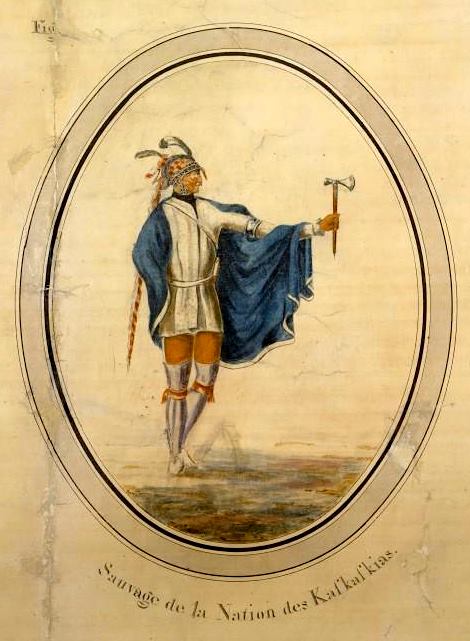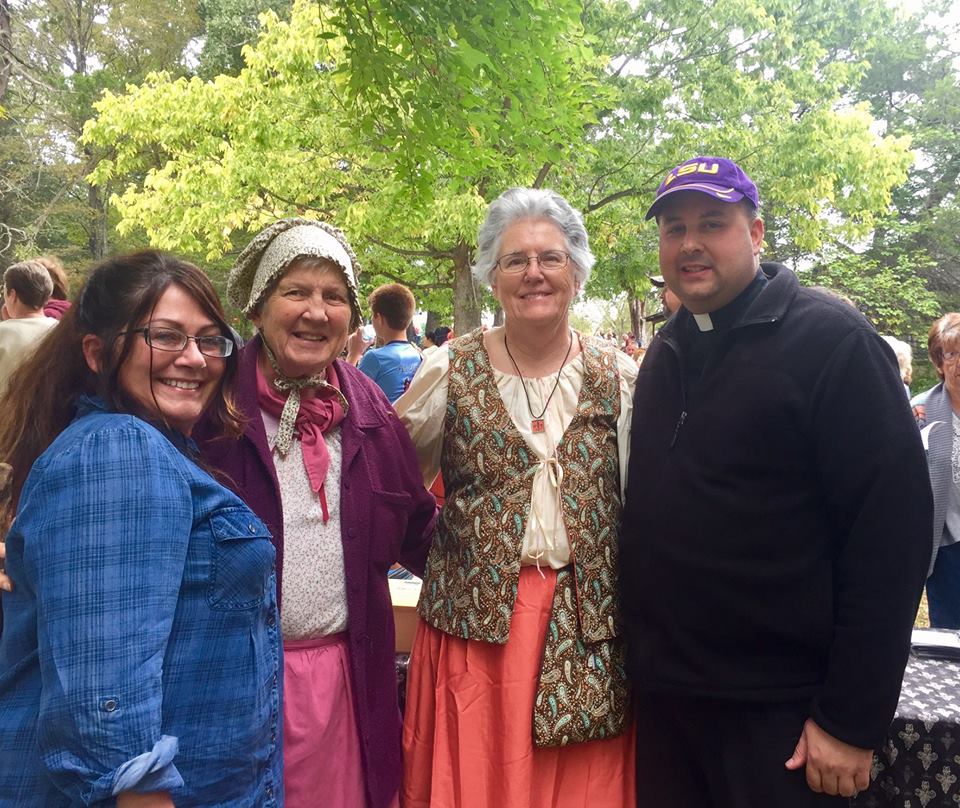Marie Rouensa
On All Saints Day or La fête de la Toussaint, we can remember Marie Rouensa, the great grandmother of the matriarch of the Vidrine family in LA – the young bride of Jean Baptiste Lapaise de Védrines, Elisabeth de Moncharvaux. Marie Rouensa has never been officially canonized as a Saint, but her life was very saintly, leaving a great influence on the spirituality and history of Upper LA and the Illinois Territory, not only during her time, but even to today.
grandmother of the matriarch of the Vidrine family in LA – the young bride of Jean Baptiste Lapaise de Védrines, Elisabeth de Moncharvaux. Marie Rouensa has never been officially canonized as a Saint, but her life was very saintly, leaving a great influence on the spirituality and history of Upper LA and the Illinois Territory, not only during her time, but even to today.
Whereas Jean Baptiste Lapaise de Védrines arrived in LA from France, the young woman he married 15 years afterward in the chapel of St. Anne at Fort Chartres, IL was, in many ways, a native of the New World. Because Elisabeth de Moncharvaux carried her father’s French name, her maternal heritage is not immediately recognizable. However, her maternal ancestry most likely stretched back in the New World for centuries. Her maternal great grandmother was Marie Rouensa “Aramepinchone” (1677-1725), a full-blooded Native American of the Illinois Kaskaskia tribe.
Marie Rouensa was the daughter of Chief Francois Xavier Mamentouensa Rouensa, who at one time was the Chief not only of his tribe of Kaskaskia Indians, but also of the whole confederation of Illini Indians. Marie converted to Christianity shortly after the Jesuit Priests arrived in IL in the late 17th century and became an influential woman in their missionary work and in the village of Kaskaskia, IL. Her life was so significant that Duke University included her in their seminars on women who helped to shape the nation in 1999. Moreover, Ohio University teaches a history course based on her life, and the Illinois State Museum has an entire wing dedicated to Marie and her tribe.
The Jesuit Fr. Jacques Gravier described Marie’s conversion to Christianity at Peoria, IL probably in 1694, when she was 17 years old: “The girl made her first communion on the feast of the Assumption of Our Lady; she had prepared herself for it during more than three months – with such fervor, that she seemed fully penetrated by that great mystery.”
Fr. Gravier’s letters also described with great enthusiasm Marie Rouensa’s prominent public role as a catechist. She became an important assistant who translated the teachings of the Christian faith into the language of the Illini Indians. Fr. Gravier says: “This young woman who is only 17 years old, has so well remembered what I have said about each picture of the Old and New Testament that she explains each one singly, without trouble and without confusion, as well as I could do – and even more intelligently, in their manner. In fact, I allowed her to take away each picture after I had explained it in public, to refresh her memory in private. But she frequently repeated to me, on the spot, all that I has said about each picture; and not only did she explain them at home to her husband, to her father, to her mother, and to all the girls who went there, as she continues to do, speaking of nothing but the pictures or the catechism, but she also explained the pictures on the whole of the Old Testament to the old and the young men whom her father assembled in his dwelling.”
She was an instructor for the adults and children of her village of Kaskaskia and an interpreter who was recognized as a gifted storyteller. Even the elders came to hear her. Because of her generous and important help, Fr. Gravier was able to do go about doing his daily round of devotional duties while Marie drew new converts to his mission.
 Some of her most important converts where her parents, Chief Rouensa and his wife. Devotion to the Roman Catholic faith as it was conveyed to her by French Jesuit priests seems to have been a central element in Marie’s life from the time of her conversion in 1694 to the moment of her death. She continued to help the Jesuits in their work throughout her life, and when she died on June 25, 1725, she was buried beneath her pew in the parish church, the only woman in the history of Kaskaskia to have that honor. Her burial record states that at the time of her death at Kaskaskia in 1725, she was “about forty-five years old.” Her eight children ranged in age from 4 years old to 28 years old.
Some of her most important converts where her parents, Chief Rouensa and his wife. Devotion to the Roman Catholic faith as it was conveyed to her by French Jesuit priests seems to have been a central element in Marie’s life from the time of her conversion in 1694 to the moment of her death. She continued to help the Jesuits in their work throughout her life, and when she died on June 25, 1725, she was buried beneath her pew in the parish church, the only woman in the history of Kaskaskia to have that honor. Her burial record states that at the time of her death at Kaskaskia in 1725, she was “about forty-five years old.” Her eight children ranged in age from 4 years old to 28 years old.
It isn’t a great surprise then, that when Elizabeth de Moncharvaux, Marie’s great granddaughter, died in September of 1816 in Ville Platte, LA, she had received the spiritual care of Fr. Barriere during a sickness of three years, and “received all of the Sacraments” from him. Likewise, when her husband died 28 years earlier, Jean Baptiste Lapaise de Védrines, had received “the Sacraments of Penance, Euchariste, & Extreme  Unction “con particular devocion” (with particular devotion or piety) at the age of 80.
Unction “con particular devocion” (with particular devotion or piety) at the age of 80.
May we remember the lives of all the “common saints” like Marie Rouensa whose influence continues to shape our own lives today!
Right: Mardell Sibley and Fr. Jason Vidrine with fellow descendants of Marie Rouensa in Fertile, MO.
